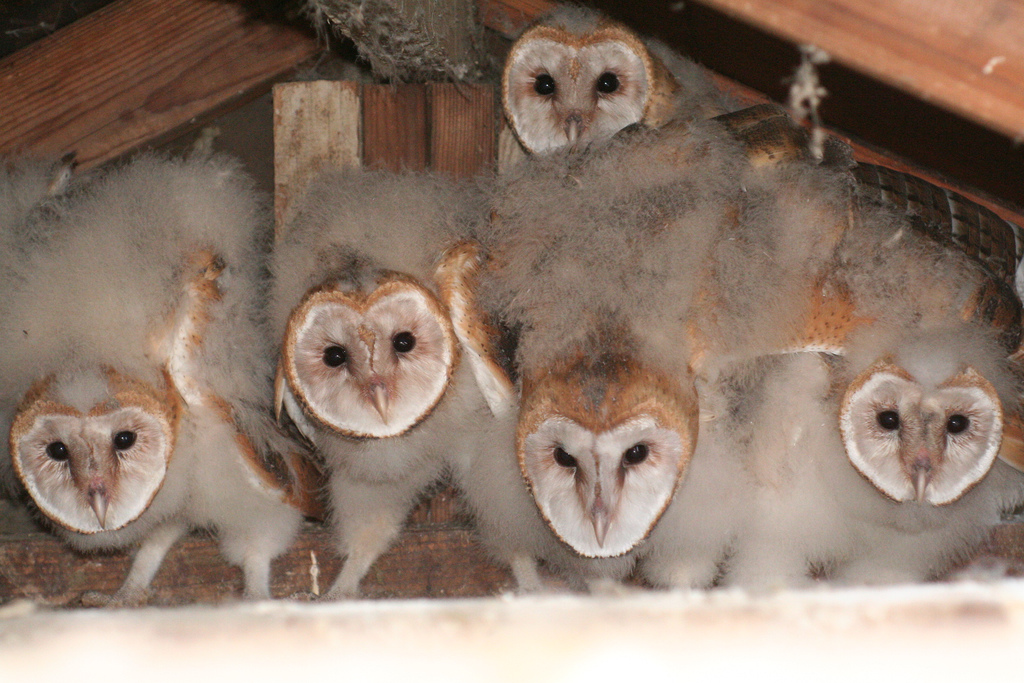Our Newest NZ Native Bird: The Barn Owl
Blogger: North Island Conservation Manager, Mark Bellingham.
Over the past 60 years, the barn owl (tyto alba) has been spotted on many occasions in New Zealand from Westland (1948) to Auckland (1985), but it’s never gained a good enough foothold to be classed as a native (i.e breeding) bird.

Owlets, Photo: Creative Commons, Author: chdwckvnstrsslhm
And no wonder. Any dishevelled bird that arrives on our shores care of a rogue wind, must survive on strange foreign tucker, fend off exotic predators and hunt out a suitable mate.
Cue: stomach aches, loneliness, unanswered mating calls and scraps with unknown foes. The odds that are stacked against them are just mind-boggling.
And yet, so many of our birds have done it, even those ones that are challenged in the wing department (read: the pukeko, the fantail, silvereye).
So over the past two years, birders have been watching the coupling of two barn owls in Kaitaia with growing interest.
After a few abortive attempts to start a family, this particular couple produced three healthy chicks which effectively moves them up a rung from vagrant, to a *drum roll please!*…. native bird.
Our native birds (no – 71) aren’t quite riff raff, but they’re by no means as treasured as our endemic birds because they carry duel (or even multiple) citizenship.
The barn owl, for example, can now claim citizenship in around 30 countries from Samoa to the UK.
Needless to say second-class citizenship isn’t all that it’s cracked up to be. In short, it means they’re protected under the wildlife act, and no-one can shoot them, but that’s about as far as its privileges go.
Our underfunded Department of Conservation is already struggling to save our endemic tweeters (like our kakapo and kokako) – barn owls can’t exactly go pleading for government handouts.
They’re firmly placed under the ‘fend for yourself’ category, despite the fact that they are star rat-hunters and they’re largely welcomed by conservationists*.
Already they are facing an uphill battle with a genetic bottleneck (re: inbreeding), but they’re good breeders, and they’ve proven that that they’re robust enough to settle pretty much anywhere (except Antarctica). Some vagrants have even estabished themselves on small islands such as Tonga
Acres of rat and mice-filled open country lies before them in Northland, so who knows – all it might take is a few well placed nest boxes (already in place care of the Wingspan Trust) to help them to truly find their feet.
The only question left in my mind is – who’s going to be their campaign manager for this year’s Bird of the Year competition? Hands up please.
* They have even been shown to co-exist happily with our smaller ruru or morepork, however there are concerns they may snack on endemic birdlife if they move to different areas. Their gut pellets (pellets they throw up to get rid of fur balls) have shown plenty of rats and traces of introduced birds such as yellowhammer, starling and sparrows, and native fernbird.
